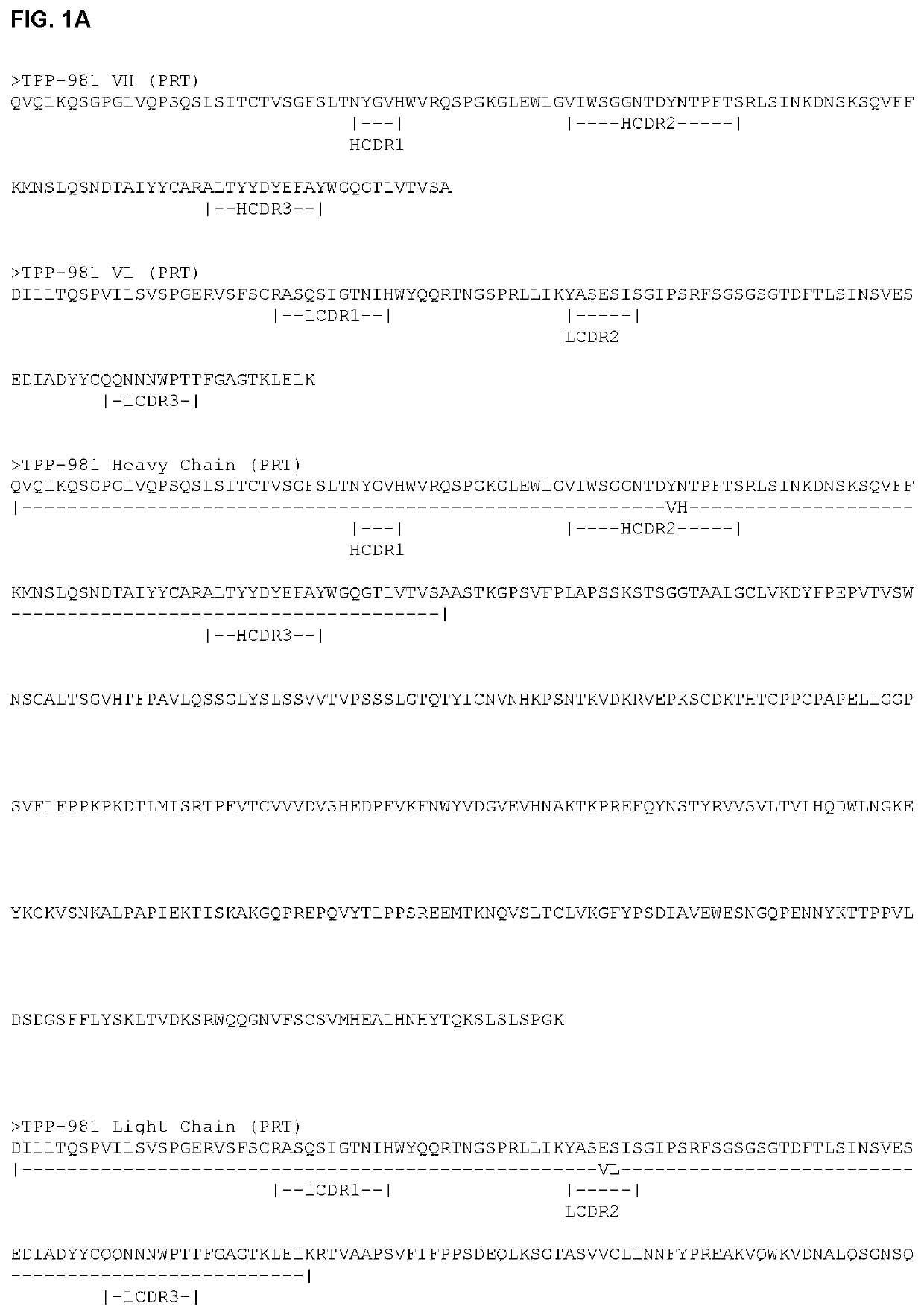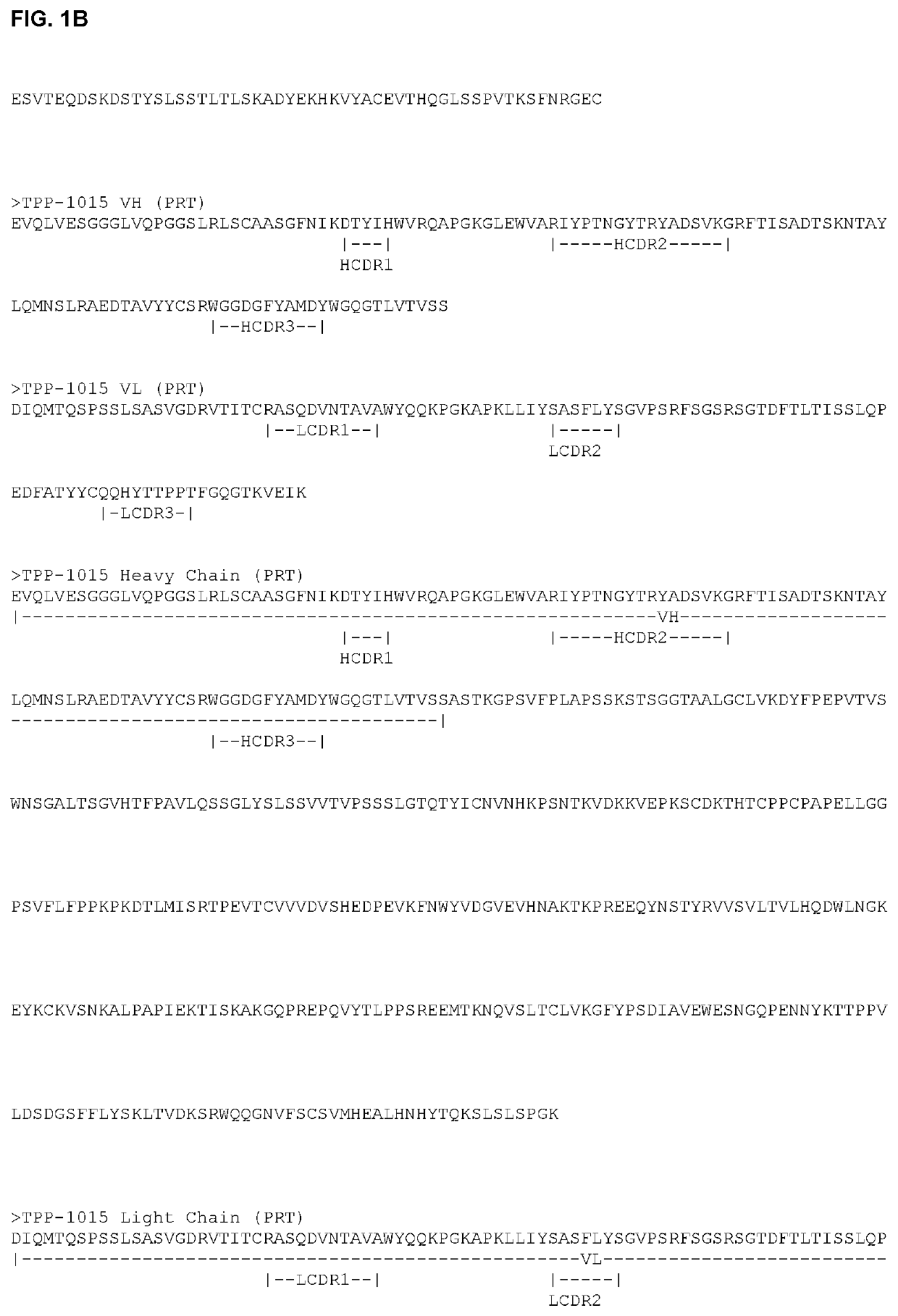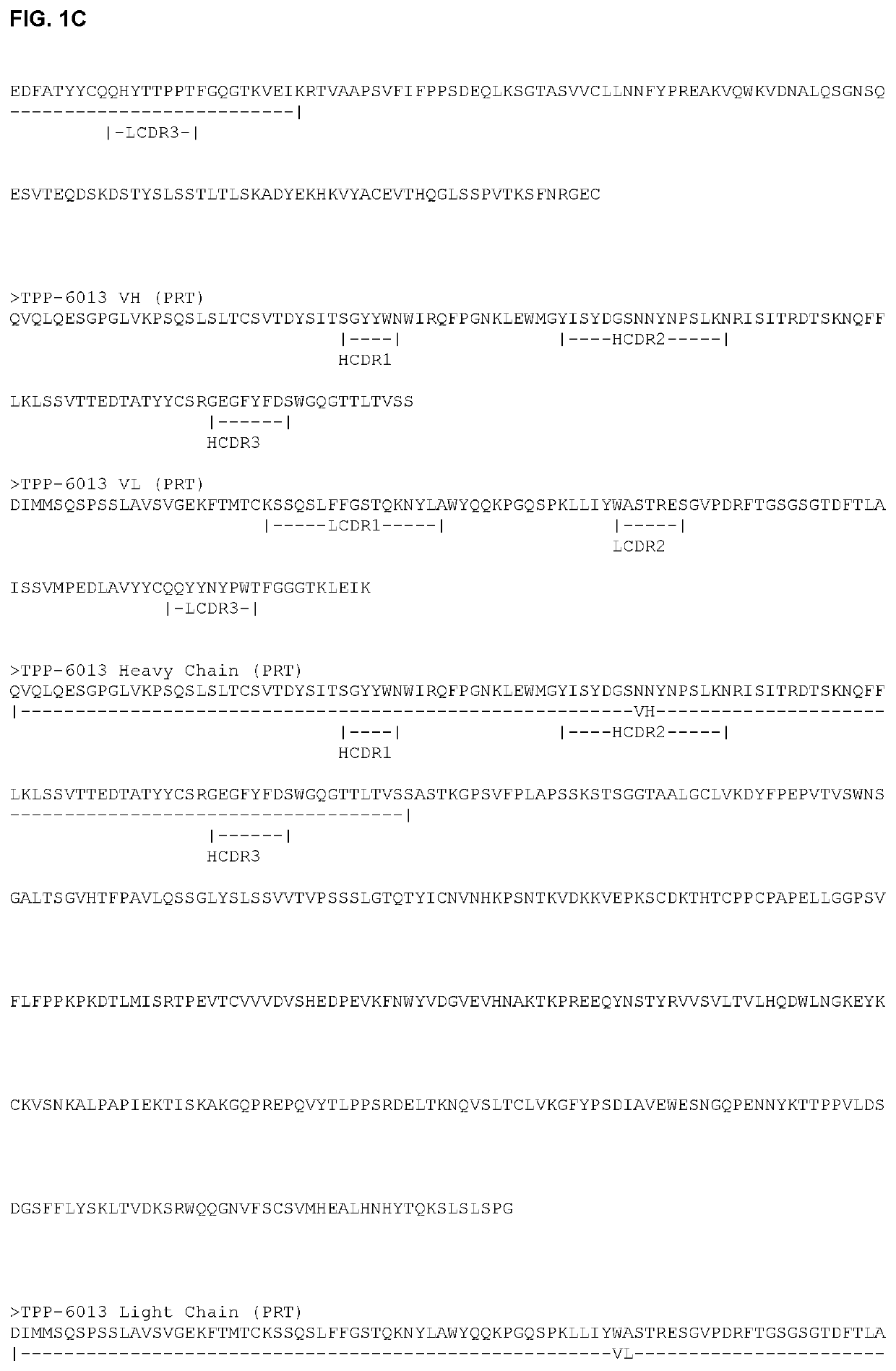Antibody drug conjugates (ADCS) having enzymatically cleavable groups
a technology of antibody drug conjugates and enzymatically cleavable groups, which is applied in the field of binding-drug conjugates (adcs), can solve the problems of low toxicity, low activity profile, and short residence time, and achieves high cell membrane permeability and short residence time
- Summary
- Abstract
- Description
- Claims
- Application Information
AI Technical Summary
Benefits of technology
Problems solved by technology
Method used
Image
Examples
examples
[0502]The examples which follow illustrate the invention. The invention is not restricted to these examples.
[0503]Unless stated otherwise, the percentages in the tests and examples which follow are percentages by weight; parts are parts by weight. Solvent ratios, dilution ratios and concentration data for the liquid / liquid solutions are based in each case on volume.
[0504]Synthesis Routes:
[0505]By way of example for the working examples, the following schemes show illustrative synthesis routes leading to the working examples:
[0506]In the above reaction scheme, X1, X2, X3, n and AK2 have the meanings given in formula (I).
[0507]a): HATU, DMF, N,N-diisopropylethylamine, RT; b) H2, 10% Pd—C, methanol 1.5 h, RT; c) 1,1′-[(1,5-dioxopentane-1,5-diyl)bis(oxy)]dipyrrolidine-2,5-dione, N,N-diisopropylethylamine, DMF, stirring at RT overnight; d) AK2 in PBS, under argon addition of 3-5 equiv. of active ester dissolved in DMSO, stirring at RT under argon for 60 min, addition of another 3-5 equiv...
example m1
N-{(2S)-2-Amino-4-[{(1R)-1-[1-benzyl-4-(2,5-difluorophenyl)-1H-pyrrol-2-yl]-2,2-dimethylpropyl}(glycoloyl)amino]butanoyl}-beta-alanyl-D-glutamic Acid
[0751]
[0752]Intermediate C110D was converted into the title compound by a 1-hour hydrogenation over 10% palladium on activated carbon in ethanol under hydrogen standard pressure at RT.
[0753]LC-MS (Method 1): Rt=1.78 min; MS (ESIpos): m / z=714 [M+H]+.
[0754]The ADCs shown below in an exemplary manner are capable of releasing the preferred metabolite M1, which has preferred pharmacological properties.
Working Examples ADCs
[0755]The ADCs shown in the structural formulae of the working examples, which were coupled to the cysteine side chains of the antibodies via maleimide radicals, are, depending on the linker and the coupling procedure, mainly present in the ring-opened or ring-closed forms shown in each case. However, the preparation may comprise a small proportion of the respective other form.
[0756]The coupling reactions were carried out u...
examples 1
[0757]
[0758]Exemplary Procedure A:
[0759]Under argon, a solution of 0.029 mg of TCEP in 0.05 ml of PBS buffer was added to 5 mg of the antibody in question in 0.5 ml of PBS (c=10 mg / ml). The mixture was stirred at RT for 30 min, and then 0.26 mg (0.00023 mmol) of Intermediate Q1 dissolved in 50 μl of DMSO was added. After stirring at RT for a further 90 min, the mixture was diluted to a volume of 2.5 ml with PBS buffer which had been adjusted to pH 8 beforehand and then passed through a PD 10 column (Sephadex® G-25, GE Healthcare) equilibrated with PBS buffer pH 8, and eluted with PBS buffer pH 8. The eluate was stirred at RT under argon overnight. This was followed by concentration by ultracentrifugation and redilution with PBS buffer (pH 7.2).
[0760]Exemplary Procedure B:
[0761]Under argon, a solution of 0.172 mg of TCEP in 0.3 ml of PBS buffer was added to 30 mg of the antibody in question in 3 ml of PBS (c=10 mg / ml). The mixture was stirred at RT for 30 min, and then 1.57 mg (0.001...
PUM
| Property | Measurement | Unit |
|---|---|---|
| stirring time | aaaaa | aaaaa |
| dissociation constant | aaaaa | aaaaa |
| dissociation constant | aaaaa | aaaaa |
Abstract
Description
Claims
Application Information
 Login to View More
Login to View More - R&D
- Intellectual Property
- Life Sciences
- Materials
- Tech Scout
- Unparalleled Data Quality
- Higher Quality Content
- 60% Fewer Hallucinations
Browse by: Latest US Patents, China's latest patents, Technical Efficacy Thesaurus, Application Domain, Technology Topic, Popular Technical Reports.
© 2025 PatSnap. All rights reserved.Legal|Privacy policy|Modern Slavery Act Transparency Statement|Sitemap|About US| Contact US: help@patsnap.com



